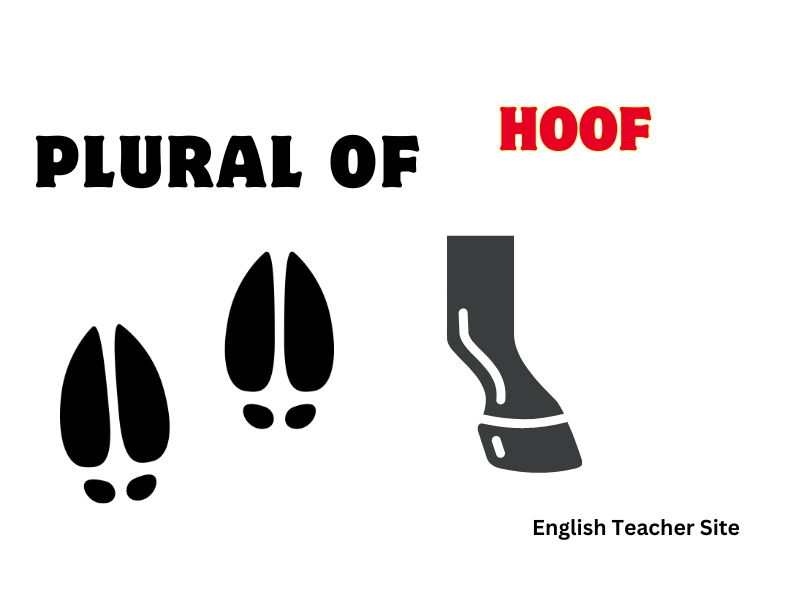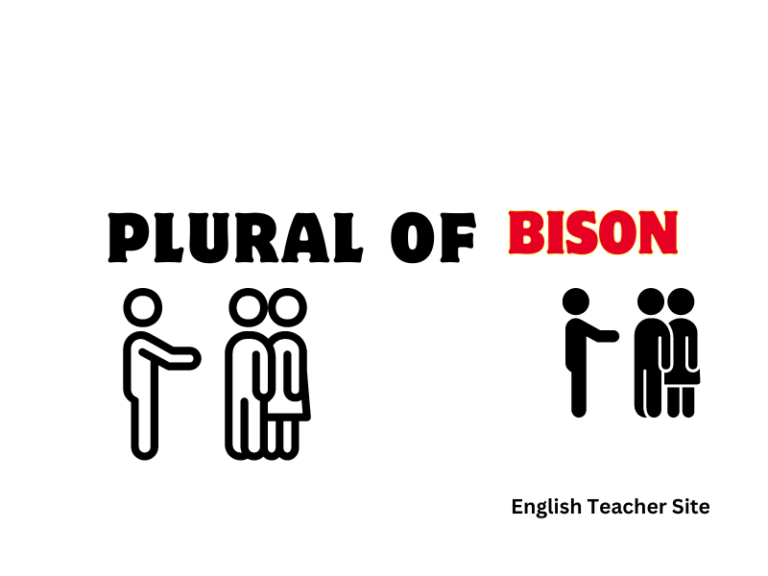What’s the Plural of Hoof? Understanding Singular and Plural Forms

- Both “hoofs” and “hooves” are accepted as the plural form of “hoof.”
- “Hooves” is more commonly used and recognized as the standard plural.
- Understanding the pluralization helps in accurate communication about animal anatomy.
In the ever-evolving English language, the pluralization of words frequently raises questions. This is the case with the word “hoof,” which refers to the hardened foot of certain animals such as horses, cows, and goats. The term comes from the Old English “hof” and has developed over time. Traditionally, many students and language enthusiasts stumble upon the decision of whether to use “hoofs” or “hooves” as the correct plural form.
What’s the Plural of Hoof?
Acceptable Plural Forms
The plural of “hoof” can be formed in two ways:
- Hooves
- Hoofs
Usage Preference
The preference for “hooves” or “hoofs” as the plural form of hoof typically depends on the context and the writer’s or speaker’s choice.
| Preferred Plural | Contextual Tendency |
|---|---|
| Hooves | More commonly used in modern English |
| Hoofs | Less common, often considered archaic |
Grammatical Considerations
When deciding which form to use, it’s important to note:
- “Hooves” is currently the more popular usage.
- Both “hoofs” and “hooves” are grammatically accepted as correct plural forms.
Examples in Sentences
- Mountain goats navigate rocky terrain easily thanks to their hooves.
- Some horse owners choose to place metallic shoes on their horses’ hooves for protection.
Hoofs/Hooves: Regular or Irregular Plural Noun?
Regular Plural Nouns: Typically, regular plurals are formed by simply adding an -s or -es to the end of the singular noun.
Irregular Plural Nouns: On the other hand, irregular plurals involve a change in the word’s spelling when forming the plural.
The term “hoof” gives rise to two acceptable plural forms that fall into both categories:
- “Hoofs”
- “Hooves”
Regular Plural Formation
- Singular: Hoof
- Plural: Hoofs
Adding -s is the standard rule for pluralization, making “hoofs” a regular plural.
Irregular Plural Formation
- Singular: Hoof
- Plural: Hooves
The alteration from “hoof” to “hooves,” changing ‘f’ to ‘ves,’ is an irregular pluralization form.
Here is a comparison of the plural forms of “hoof”:
| Regular | Irregular |
|---|---|
| Hoof – Hoofs | Hoof – Hooves |
Usage in Modern English
In modern English usage, both plurals are accepted, although “hooves” is often the preferred form. The use of “hoofs” or “hooves” can be attributed to variation in regional English and historical spelling conventions.
- Preferred Form: Hooves
- Alternative Form: Hoofs
Application: Examples of Hoof
The term refers to the tip of the foot of certain land mammals, including horses, deer, and sheep. It’s noteworthy that the word expresses an essential anatomical feature which allows these animals to support their weight and move efficiently.
Regular Plural Formation:
The addition of “-s” to form a plural is common in English. In the case of ‘hoof’, adding “-s” results in ‘hoofs’, which is an accepted plural form.
Irregular Plural Formation:
In some instances, English words form the plural through irregular means, such as changing the vowel sound or adding different suffixes. ‘Hoof’ follows this pattern when it becomes ‘hooves’, an equally accepted plural form.
Here are two tables demonstrating the use of both plural forms of ‘hoof’:
Table 1: Using ‘Hoofs’ in Sentences
| Sentence | Application |
|---|---|
| The horse’s hoofs pounded the ground as it galloped. | Regular plural form, showing physical action |
| A farrier regularly checks and trims the hoofs to ensure the horse’s comfort. | Regular plural, emphasizing care and maintenance |
Table 2: Using ‘Hooves’ in Sentences
| Sentence | Application |
|---|---|
| The sound of hooves echoing through the forest signaled the deer’s approach. | Irregular plural, describing auditory perception |
| The clopping of hooves on cobblestone streets is reminiscent of a bygone era. | Irregular plural, evoking a historical setting |
Usage in Context:
- The blacksmith specialized in crafting horseshoes for the hoofs of thoroughbred racers.
- During the wildlife tour, the guide pointed out the tracks made by the hooves of various animals.
In literary and historical contexts, both plural forms may be used to express different nuances or stylistic choices. Whether a writer chooses ‘hoofs’ or ‘hooves’ can be influenced by factors such as regional preferences or the rhythm of a sentence.
Application: Examples of Hooves
Ungulate Mammals and Their Hooves
Ungulate mammals are known for their hooved feet. Here’s a brief look at some examples:
- Horses have hooves that are crucial for their mobility and require regular maintenance such as trimming and shoeing.
- Cows also have hooves, which support their weight while walking and standing on diverse terrains.
- Deer, well adapted to forest environments, have hooves designed for running and sharp turns.
Usage in Sentences
To facilitate comprehension, we can see how “hooves” aligns within sentences:
- The farrier checked the horse’s hooves for any signs of damage.
- In the wild, deer’s hooves become naturally worn down from constant movement.
Hoof Care Products
Hoof care is a significant part as it ensures the health and mobility of these animals. Here’s a compact list of products used for hoof care:
| Product Type | Use Case |
|---|---|
| Hoof pick | Cleaning debris from the hooves |
| Hoof oil | Keeping the hooves moisturized |
| Hoof boots | Protecting injured or sensitive hooves |
Materials Derived from Hooves
Lastly, materials derived from hooves have various applications:
| Material | Application |
|---|---|
| Gelatin | Used in food and pharmaceuticals |
| Glue | An adhesive made traditionally from hoof-derived collagen |
Singular Form of Hooves
In the singular, hoof indicates one unit of this important appendage, vital for the animal’s mobility and overall health.
Below are two tables that outline how the singular form “hoof” transitions to its plural counterparts.
Singular to Plural Transition:
| Singular | Plural |
|---|---|
| Hoof | Hooves |
| Hoofs |
Usage in Sentences:
| Singular | Plural |
|---|---|
| The horse has a strong hoof. | Horses have strong hooves. |
| A goat’s hoof needs care. | Goats’ hoofs are durable. |
In the context of grammar, “hoof” represents a clear example of an irregular noun, where the transformation from singular to plural doesn’t follow a simple rule such as adding an “s” or “es.”
Key Points to Remember:
- A singular hoof is indicative of one foot’s hard cover in certain mammals.
- Transitioning from singular to plural can result in either “hooves” or the less common “hoofs.”
Etymology of the Word Hoof/Hooves
The word “hoof” originates from the Old English term hof, signifying the tough covering found at the terminal part of an animal’s limb. It can be traced back to the Proto-Germanic *hōfaz. This term also has semblances in other Germanic languages, such as Old Saxon, Old Frisian, Old Norse, Danish, Dutch, and German.
Proto-Indo-European Roots:
| Language | Term | Meaning |
|---|---|---|
| Sanskrit | saphah | “hoof” |
| Polish | kopyto | “hoof” |
| Proto-Indo-European | *kop- | “to beat, strike” |
The evolution of the term “hoof” to its plural form “hooves” exemplifies an irregular pattern typically found in Old English, where nouns ending in -f or -fe would be pluralized to -ves.
Plural Forms:
- Regular: hoofs
- Irregular: hooves
Both “hoofs” and “hooves” are acknowledged as correct pluralizations, although “hooves” might be more commonly seen and accepted as the irregular plural form.
Language Development:
- Old English: hof
- Proto-Germanic: *hōfaz
- Modern English:
- Singular: hoof
- Plural: hoofs/hooves
Sources
- Wikipedia on hoof.
- John Milton, Paradise Lost.
- Origin of hoof.
My name is Khamis Maiouf. I am the creator of the English Teacher Site, dedicated to providing valuable resources and insights for students around the world. With a passion for education and a commitment to helping students enhance their skills, I aim to make English teaching more effective and enjoyable for both educators and students.






